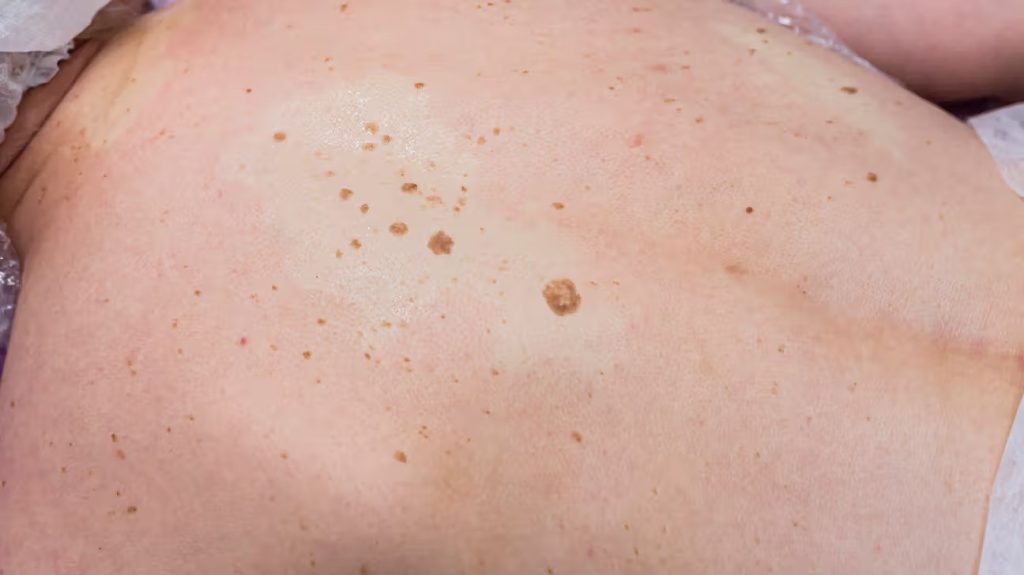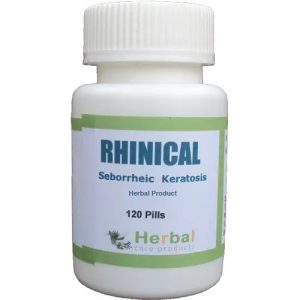No products in the cart.
Return To Shop 0 Cart $0.00 0
No products in the cart.
Return To Shop Shopping cart (0)
Subtotal: $0.00
Free shipping over 299$
How to Remove Seborrheic Keratosis at Home: Safe and Effective Methods
Seborrheic keratosis is a common, benign skin growth that often appears as a brown, black, or light tan spot with a waxy, scaly, or slightly raised texture. Though harmless, some people prefer to remove them for cosmetic reasons or comfort. While there are medical treatments available, there are also some at-home remedies that may help in removing or reducing the appearance of seborrheic keratosis. Here’s a guide to understanding these options and how to use them safely.
6 Home Remedies for Seborrheic Keratosis
Here are six Home Remedies for Seborrheic Keratosis that may help reduce the appearance of seborrheic keratosis. While these remedies won’t work for everyone, they are generally safe to try.

1. Apple Cider Vinegar (ACV)
Apple cider vinegar has been praised for its skin benefits, and some people find it effective in treating seborrheic keratosis.
How to Use:
- Dilute apple cider vinegar with water (equal parts).
- Soak a cotton ball in the solution and apply it directly to the growth.
- Secure it with a bandage and leave it on for 30 minutes.
- Rinse with water and pat dry.
Frequency: Repeat once daily for several days to see if there’s a reduction in the size or texture of the growth. However, avoid using ACV on sensitive or broken skin, as it may cause irritation.
Related Articles: Does red light therapy help Seborrheic Keratosis?
2. Tea Tree Oil
Tea tree oil, with its anti-inflammatory and antimicrobial properties, may help reduce the appearance of seborrheic keratosis over time.
How to Use:
- Mix a few drops of tea tree oil with a carrier oil like coconut or olive oil.
- Apply the mixture to the affected area using a cotton swab.
- Leave it on for at least 30 minutes, then wash off.
Frequency: Use once daily, preferably at night. Test on a small patch of skin before regular use, as tea tree oil can sometimes cause irritation.
3. Castor Oil and Baking Soda Paste
This combination may help to reduce seborrheic keratosis naturally.
How to Use:
- Mix equal parts of castor oil and baking soda to create a paste.
- Apply a thin layer to the growth and cover it with a bandage.
- Leave it on overnight, and rinse it off in the morning.
Frequency: Apply daily until you notice improvement. The paste may help soften the growth, potentially making it less noticeable.
4. Aloe Vera Gel
Aloe vera is known for its soothing and anti-inflammatory properties. It won’t remove the growth entirely, but it may help reduce irritation and improve skin health around the affected area.
How to Use:
- Apply pure aloe vera gel to the seborrheic keratosis.
- Leave it on for 20-30 minutes, then rinse with water.
Frequency: Use 2-3 times a day. Aloe vera is gentle, so it’s safe for frequent use, especially on irritated skin.
Related Articles: Seborrheic Keratosis: The Easiest Way to Remove at Home
5. Vitamin D Oil or Creams
There is some anecdotal evidence that Vitamin D creams or oil might help reduce the appearance of seborrheic keratosis.
How to Use:
- Apply a small amount of Vitamin D oil directly to the spot.
- Massage it into the growth and let it absorb.
Frequency: Apply once daily, preferably in the evening. Vitamin D can be soothing for the skin and may help manage the condition over time.
6. Lemon Juice
Lemon juice contains citric acid, which can act as a natural exfoliant and may help improve the appearance of seborrheic keratosis.
How to Use:
- Apply fresh lemon juice to the affected area with a cotton ball.
- Leave it on for 15-20 minutes before rinsing it off.
Frequency: Try applying once daily. Note that lemon juice can make your skin more sensitive to the sun, so avoid sun exposure after using it.
Precautions and Tips
- Always Perform a Patch Test: Before applying any remedy, test it on a small area of skin to ensure there’s no adverse reaction.
- Avoid Scratching or Picking: Seborrheic keratosis can be itchy, but picking or scratching can cause infection and irritation.
- Be Consistent but Patient: Home remedies can take time to show results, so be consistent and give it a few weeks to see any changes.
- Consult a Doctor for Large Growths or Irritation: If the growth is large, changing, or causing discomfort, it’s best to consult a healthcare provider. Home remedies are meant for mild cases, and some forms of seborrheic keratosis require medical removal.
When to Seek Professional Help
If the appearance of seborrheic keratosis significantly bothers you or if there are signs of infection, bleeding, or rapid growth, it’s recommended to seek medical advice. Dermatologists can offer treatments like cryotherapy, laser removal, or curettage to remove the growth effectively.
Conclusion
While there are several at-home methods that may help manage or reduce the appearance of seborrheic keratosis, patience and caution are essential. Always prioritize safety and consult a healthcare provider if you’re uncertain about any treatment or if you experience adverse effects.
More
More

